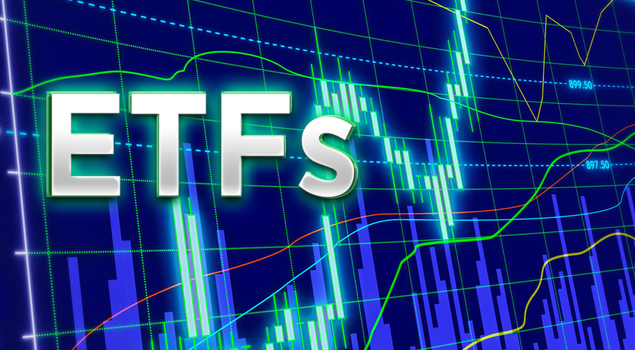Index funds traded and listed on exchanges like stocks are Exchange Traded Funds or ETFs. A whole new panorama of Institutional Money Managers as well as Investment opportunities of retail has been opened by ETFs all across the world. ETFs allow investors to get wide exposure to all stock markets in different countries and specific sectors on a real-time basis, with relative ease and at a lower cost than many other different forms of investing.
The composition of an Index, for instance, BSE Sensex or S&P CNX Nifty, is reflected by the ETF, or in simple words it can be said as a basket of stocks. The trading value of the ETFs is based on the net value of the basic stocks it represents.
You can think of the ETF like a Mutual Fund that you can purchase and sell in real-time at a price, considering its price will change throughout the day. But, ETFs offers much more benefit to the investors over normal open-ended mutual fund –
- Selling and buying ETFs is as simple as buying or selling stock on the exchange.
- Investors can take advantage of the intraday movements in the market through ETFs. Open-ended funds do not allow this.
- One pays lesser management fees with ETFs. Distribution and other operational expenses are significantly lower as ETFs are listed on the Exchange. This makes ETFs cost effective, and these savings are passed on to the investor.
- The long-term investors are protected from short-term movements in the fund due to ETFs unique structure.
ETFs – What makes its useful?
An ETF can be based on debt market index, a commodity or a stock market index. The portfolio of an ETF mimics the securities in its underlying index, exactly in the same proportion. As and when the composition of the index change, the ETFs mimics the same in its own portfolio as well.
Thus, an ETF’s return is almost exactly in line with the index. This could be the reason the ETFs are advised in funds, which switch around portfolio composition actively. Also, there is no need for a novice investor to understand, study and judge fund performance either.
Expenses are low in an ETF, and there is no fund manager fee. Another reason for low expenses could be the limited churn of the portfolio. Indian ETFs have an average expense ratio of less than 1%. But, the actively managed funds have much higher ratios of between 2 to 3%.
Other benefits of ETFs are: ETFs can be sold and bought easily on the exchange through terminals across the country; They do not need any separate form filling, and takes just a phone call to your broker or a click on the net; ETFs can be bought and sold at a price close to the actual NAV of the Scheme during market hours.
ETFs and India – few drawbacks
Compared to India, the size of ETFs – both in value and volume – is significant in the developed financial markets, mostly in the Western countries. In India, the total ETFs in India’s Mutual fund assets is in single digit percentage, which is very low.
Over a third of the NSE-listed ETFs are gold. Others are spread across liquid bonds, banks, public sector enterprises and some thematic indices. Lack of variety of products is a huge limitation for the Indian ETF.
On the other hand, Global ETFs have a broad variety of indices and themes to play on – country-wise markets, currencies, several strategic indices, market capitalization-based indices, sector indices, treasury bonds, emerging market groups and so on.
What to do before taking ETF in India?
Before taking ETFs, read the offer document and check if the particular scheme meets the mentioned criteria in the document or not. Further, check the TE of the ETF i.e. in comparison to the underlying security, the deviation of ETF value should be very less. If it is not, then the scheme loses the passive nature of the fund.
The past performance of scheme, corpus of the scheme and underlying securities should also be checked before taking an ETF.
What happens to dividends?
As for dividends received by the scheme, they will be reinvested in the scheme. Also, the fund may decide to distribute dividends to the investors.
What are the rules governing taxation of ETFs in India?
The rules applied in case of selling or buying mutual fund units or stocks are applied in ETFs as well. But one should always read Key Information Memorandum and the respective Offer Document.
Popular ETFs in market
Last 3 to 6 months have been good for ETFs with an average return of around 10%. Presently, some of the popular ETFs in the market are: ICICI Pru Gold ETF (last 3-month return of 10.3%), GS Gold BeES (last 3-month return of 10.2%), IDBI Gold Exchange Traded Fund (last 3-month return of 10.3%), UTI Gold Exchange Traded Fund (last 3-month return of 10.2%).
Who should go for ETFs?
Liquidity is one of the major concerns in the ETFs. Presently, the liquidity is less in the market because of the low participation of the retail shareholders in ETFs. Moreover, your return will be limited to market price movement captured by the ETF’s because ETFs are traded on the market.
ETFs aid in diversifying one’s portfolio as they mirror market movement, and fits well for conservative investors who want to trade at low costs. So, investors who want to avail tax deduction benefits and follow a passive strategy with no complications should go for ETFs.
Overall, it can be said that ETFs are Investment Avenue that combines the features of Mutual Fund with stocks. Owing to their passive nature of funds at less costs and their ability to track a particular index, the demand for ETFs is likely to increase with the market becoming more efficient and developed.
